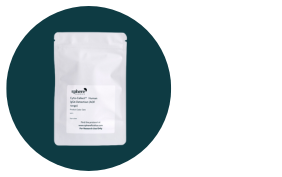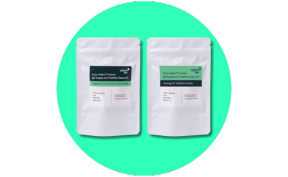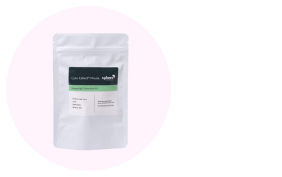Frequently Asked Questions (FAQs)
Have questions about picodroplets, Cyto-Mine® technology, or assay workflows? You’re in the right place. Explore expert answers on technology, applications, and performance—backed by real lab experience.

How long does it take to carry out one experiment using the Cyto-Mine® platform?
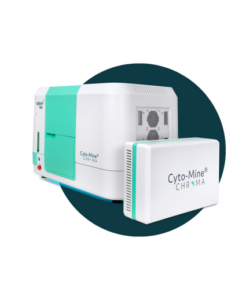 The duration of an experiment in a Cyto-Mine® platform depends on the sample type and experimental objectives. A typical experiment, from sample preparation to plate collection, takes 4 to 7 hours.
The duration of an experiment in a Cyto-Mine® platform depends on the sample type and experimental objectives. A typical experiment, from sample preparation to plate collection, takes 4 to 7 hours.
Key considerations:
- For antibody discovery and cell line development, the workflow includes a 1–2 hour incubation in picodroplets for assay signal accumulation inside the instrument.
- Some bioassays, such as reporter cell assays or internalization assays, require longer incubation times, involving overnight culture in the picodroplets which can also be performed in Cyto-Mine®.
- Most of the workflow is hands-free, meaning users do not need to monitor the system continuously throughout the experiment.
What is the Cyto-Cartridge®?
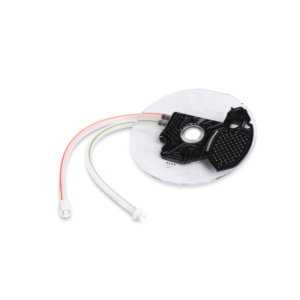
The Cyto-Cartridge® is an elegant and sophisticated microfluidic consumable that integrates all the essential microfluidic operation units for a complete workflow, including:
- Sample chamber
- Picodroplet generation
- Incubation
- Detection and sorting
- Imaging and dispensing
What material is the Cyto-Cartridge® made of?
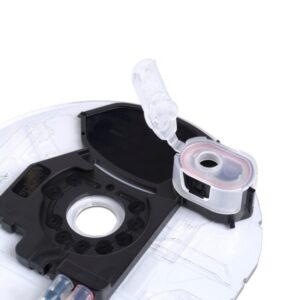
It is made from a high-quality, rigid polymer that has:
- Superior optical properties for precise imaging and detection
- Biocompatibility to ensure optimal cell viability
- Durability to support reliable operation within Cyto-Mine®
Is the Cyto-Cartridge® reusable?
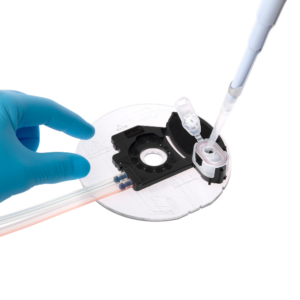 No, the Cyto-Cartridge® is designed for single use and is not reusable. This ensures:
No, the Cyto-Cartridge® is designed for single use and is not reusable. This ensures:
- Minimized risk of sample contamination
- Elimination of sample carryover between experiments
- Reduced maintenance requirements for the system
- Consistent and reliable experimental performance
Can the Cyto-Mine® Chroma be used in a GMP environment?
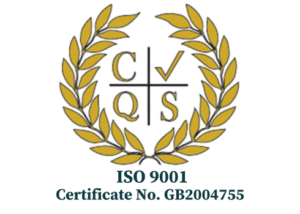
Yes. Cyto-Mine Chroma® and its related consumables are manufactured under our ISO 9001-compliant quality management system, ensuring high quality and consistent performance. Our software supports FDA 21 CFPR Part 11 compliance to meet electronic signature requirements. We also provide IQ/OQ packages to support equipment qualification at your site and support your PQ and validation activities. Ref: Introducing New Equipment into GMP Facilities: A Vendor’s Perspective - European Pharmaceutical Manufacturer
Samples
What cell types can be used in experiments using Cyto-Mine® technology?
Cyto-Mine® platforms are designed for live cell screening and has been used with a wide range of cell lines and primary cells from various species and tissue sources. Below are examples of cell types categorized by application area:
Cell Line Development
- CHO (CHO-S, CHO-K1, CHO-DG44)
- HEK293 (Human Embryonic Kidney cells)
Antibody Discovery
Source Tissues:
- Spleen
- Lymph nodes
- Bone marrow
- PBMC (Peripheral Blood Mononuclear Cells)
- Hybridoma cells
- CHO libraries
Species:
- Mouse
- Canine
- Llama
- Human
Samples Status:
- Fresh
- Frozen
- Activated (e.g., memory B cells)
Other Applications (Cell Therapy & Cell Engineering)
- CAR-T – Chimeric Antigen Receptor T cells
- THP-1 – Human monocyte cell line
- RAJI – Human B-lymphocyte cell line
- HCT 116 – Human epithelial colorectal cancer cell line
- Jurkat – Human T-lymphocyte cell line
- A431 – Human epithelial epidermoid carcinoma cell line
- A549 – Human epithelial lung carcinoma cell line
- MCF-7 – Human epithelial breast cancer cell line
Note: Picodroplets work best with suspension cells. Adherent cells can be used after trypsinization, but have a tendency to aggregate.
How many cells do I need to load into a Cyto-Mine® platform? / What is the cell analysis throughput of the Cyto-Mine® platforms?
 Cyto-Mine® technology enables users to screen between 100,000 and 40 million cells per day, depending on the experimental objective.
Cyto-Mine® technology enables users to screen between 100,000 and 40 million cells per day, depending on the experimental objective.
Users can choose from the following screening modes:
- Monoclonality Mode: Load 100,000-300,000 cells per experiment to maximize monoclonality of dispensed cells. Suitable for cell line development applications.
- High-Throughput Mode: Load 0.5–2 million cells for high-throughput single-cell screening. Ideal for antibody discovery or applications requiring large-scale cell screening.
- Enrichment Mode: Load 10–40 million cells to screen in mini-pools and enrich rare positive cells. Suitable for full repertoire screening or large cell library enrichment.
How much sample volume is required for an experiment?
Users need to load up to 1 mL of cell sample into the Cyto-Cartridge®. The required volume depends on the number of droplets to be generated:
- 0.5 mL for 1 million droplets
- 0.75 mL for 1.5 million droplets
- 1 mL for 2 million droplets
Do I need to use any special medium or buffer for experiments in Cyto-Mine® technology?
In most cases, users can use their preferred culture medium that works best for their cells in Cyto-Mine® platform experiments. However, there are several important considerations:
- Use a medium with low FBS content (<10% recommended).
- Avoid media with high detergent concentrations, as they may affect droplet stability.
- Use phenol red-free medium is recommended, to improve assay performance and signal detection.
Note: Users should not use conditioned media in secretion assays, as it will shield the assay signal.
Generation
What is the size of the picodroplets generated in Cyto-Mine® platforms?
The picodroplets generated in Cyto-Mine® platforms are empirically determined to have a volume of 450 pL and a diameter of 95 µm.
Can a user change the size of the picodroplets?
No, the size of picodroplets in Cyto-Mine® technology is fixed to ensure consistency and reliability. The droplet size has been carefully optimized to provide:
- Optimal performance for cell culture and assay signal detection
- Stable operation throughout the workflow
- Simplified experimental setup for users, eliminating the need for size adjustments
How many droplets are generated in one experiment?
In a single experiment, Cyto-Mine® technology can generate up to 2 million picodroplets. Users can select from 1 million, 1.5 million, or 2 million droplets, depending on their sample and experimental objectives.
Incubation
Do I need to remove the Cyto-Cartridge® from the Cyto-Mine® platform for incubation?
No, incubation occurs within the Cyto-Mine® platform. Users do not need to remove the Cyto-Cartridge® at any point during the experiment.
Cyto-Mine® platforms feature a temperature control module that enables incubation of cells at the desired temperature.
What temperature can be used for cell incubation in Cyto-Mine® technology?
Users can incubate cells at temperatures ranging from 25°C to 42°C. However, in most cases, cells are cultured at 37°C, which is optimal for mammalian cells.
How long can I incubate cells in the Cyto-Mine® platform?
Cyto-Mine® technology allows cell incubation for up to 24 hours, providing sufficient time for various bioassays to take place. The incubation duration can be adjusted based on the specific assay requirements.
- For cell line development or antibody discovery, where antibody secretion is measured by a FRET assay, the typical incubation time is 1 to 2 hours.
- For assays requiring longer incubation, such as reporter cell assays or internalization assays, incubation times can extend to 16–24 hours.
Sorting
What is the sorting speed? What is the duration of the sorting step?
The total sorting time in an experiment depends on the number of cells loaded and the positive rate within the cell population. Sorting duration can range from 15 minutes to up to 2.5 hours.
When is the fluorescent added in an experiment process?
All assay reagents are added to the cell suspension before the sample is loaded into the Cyto-Cartridge®.
How many lasers are in the Cyto-Mine® Chroma? How many colors can it detect?
Cyto-Mine® Chroma is equipped with 4 lasers (405, 488, 561, 638 nm) and 4 detection channels (446, 502, 605, 678 nm).
Dispensing
What type of plates I can use for Cyto-Mine® platform dispensing?
Cyto-Mine® technology supports two dispensing modes, each requiring different microtiter plates:
1. Single Droplet Dispensing
- Each individual picodroplet is precisely dispensed into a separate well.
- Compatible with 96-well and 384-well plates.
2. Pooled Dispensing
- All sorted picodroplets are collected into a single well.
- Requires a 24-well plate.
Do I need any special plates type or brand for an experiment in a Cyto-Mine® platform?
The user can use any 96 – or 384 – well plates that conform to the ANSI/SLAS standards.
Can I dispense into PCR plates?
Yes, Cyto-Mine® technology can dispense picodroplets into 96- or 384-well PCR plates.
We can provide recommendations on compatible PCR plates to ensure optimal performance.
How many plates can I dispense? Is there a limit on the number of plates?
The number of plates you can dispense is primarily determined by the number of positive hits collected and your downstream processing capacity.
There is no strict limit, but practically, it depends on your application and workflow.
- For cell line development: Typically, users collect 5–10 96-well plates or 2–5 384-well plates.
- For antibody discovery: Typically, users collect 1–4 96-well plates or 1–2 384-well plates.
What is the dispensing speed? How long does it take to fill a 96- or 384-well plate? How long does the dispensing process take?
The dispensing step can take anywhere from a few minutes to up to an hour, depending on:
- The nature of the samples
- The number of positive hits collected
- The number of plates the user chooses to collect
At maximum speed, Cyto-Mine® technology can dispense:
- 96-well plate: 1–3 minutes per plate
- 384-well plate: 4–12 minutes per plate
The pooled dispensing process will take about 17 minutes.
Downstream Processes
What are the possible downstream processes after using Cyto-Mine® technology in my workflow?
 Cyto-Mine® technology can be integrated with various downstream processes to support different workflows and applications such as:
Cyto-Mine® technology can be integrated with various downstream processes to support different workflows and applications such as:
- Single-cell culture for outgrowth and clone expansion
- Dispense single cells into microtiter wells pre-filled with culture medium.
- Suitable for downstream clonal expansion, functional assays, and cell-based screening.
- Gene recovery via single-cell RT-PCR
- Dispense single cells into plates pre-filled with an RT-PCR-compatible lysis buffer.
- Enables the recovery of genes of interest (e.g., IgG variable regions) for downstream validation.
- Batch culture of sorted positive cells
- Collect sorted positive cells as a pooled population for further culture.
- Facilitates bulk antibody or recombinant protein production from enriched cell pools.
- Single-cell sequencing workflow integration
- Collect sorted positive cells and process them using single-cell sequencing platforms.
- Enables transcriptomic analysis of a selected subset of a cell repertoire.
